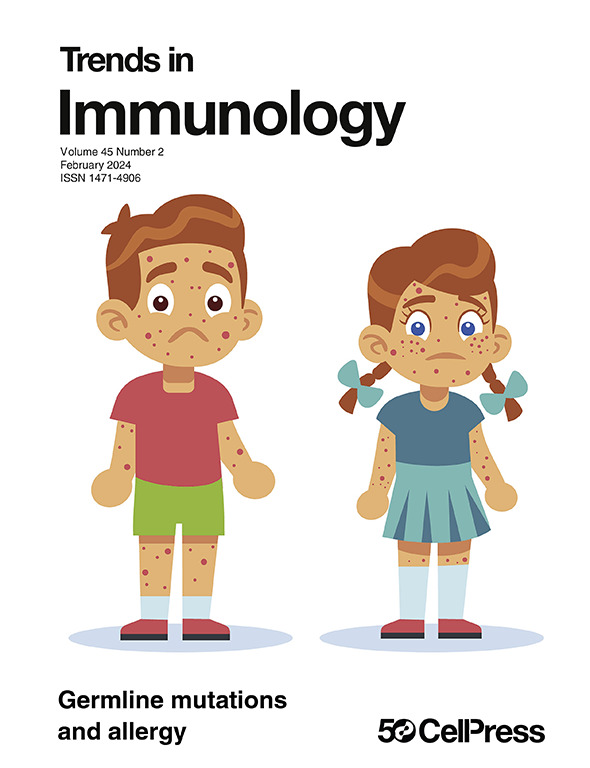蝙蝠的免疫特征:对新病毒的抵抗力和耐受力
IF 13.1
1区 医学
Q1 IMMUNOLOGY
引用次数: 0
摘要
蝙蝠是最多样化的哺乳动物物种之一,占哺乳动物多样性的 20% 以上。与其他哺乳动物宿主相比,在过去的二十年中,蝙蝠的病毒向人类的传播不成比例,这归因于蝙蝠体内丰富的病毒、蝙蝠与人类在系统发育上的相似性以及人类与野生动物接触的增加。蝙蝠基因组中独特的进化适应性,特别是抗病毒保护和免疫耐受基因,使蝙蝠能够成为诱发大流行病的病毒库。在此,我们讨论了目前在了解蝙蝠作为人畜共患病大流行驱动因素的作用方面存在的局限性和取得的进展。我们还讨论了揭示驱动病毒和宿主共同进化的空间、动态和生理因素的新技术。本文章由计算机程序翻译,如有差异,请以英文原文为准。
Immunological features of bats: resistance and tolerance to emerging viruses
Bats are among the most diverse mammalian species, representing over 20% of mammalian diversity. The past two decades have witnessed a disproportionate spillover of viruses from bats to humans compared with other mammalian hosts, attributed to the viral richness within bats, their phylogenetic likeness to humans, and increased human contact with wildlife. Unique evolutionary adaptations in bat genomes, particularly in antiviral protection and immune tolerance genes, enable bats to serve as reservoirs for pandemic-inducing viruses. Here, we discuss current limitations and advances made in understanding the role of bats as drivers of pandemic zoonoses. We also discuss novel technologies that have revealed spatial, dynamic, and physiological factors driving virus and host coevolution.
求助全文
通过发布文献求助,成功后即可免费获取论文全文。
去求助
来源期刊

Trends in Immunology
医学-免疫学
CiteScore
25.10
自引率
0.60%
发文量
130
审稿时长
6-12 weeks
期刊介绍:
Trends in Immunology serves as a vital platform for tracking advancements across various areas of immunology, offering concise reviews and hypothesis-driven viewpoints in each issue. With additional sections providing comprehensive coverage, the journal offers a holistic view of immunology. This broad perspective makes it an invaluable resource for researchers, educators, and students, facilitating the connection between basic and clinical immunology. Recognized as one of the top monthly review journals in its field, Trends in Immunology is highly regarded by the scientific community.
 求助内容:
求助内容: 应助结果提醒方式:
应助结果提醒方式:


